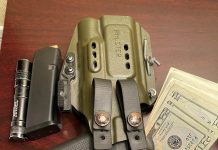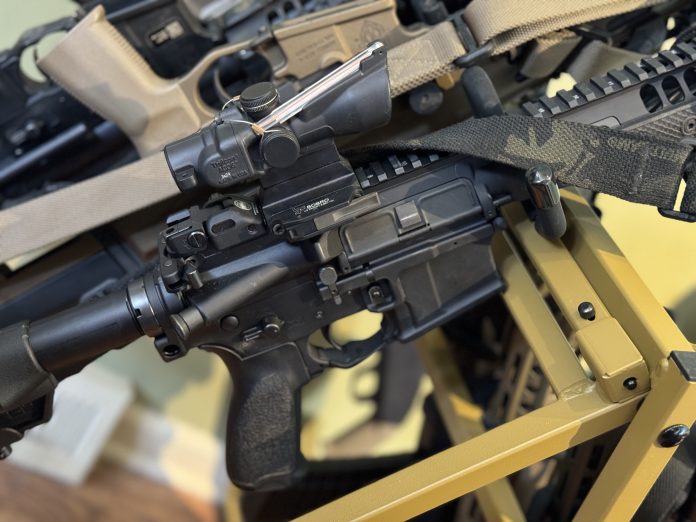
I’ve written and we’ve spoken on topic of the ‘Friend Rifle’ before. The Friend Rifle or ‘Loaner’ is a concept I place high value on, nearly as much as being able to offer my hearth and home to a friend who needs a bed in town.
I want a friend who needs a rifle to have a rifle, a good one, ready to be used. In that mindset and after a few recent conversations I decided to make a change to the loaner as I had it previously.
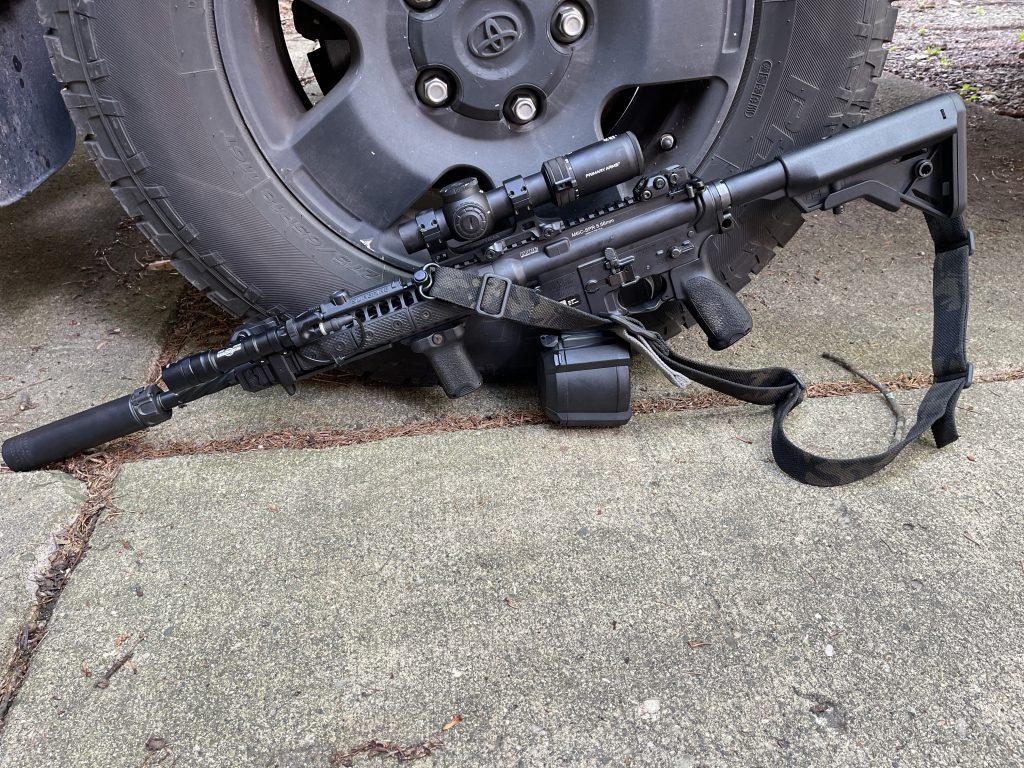
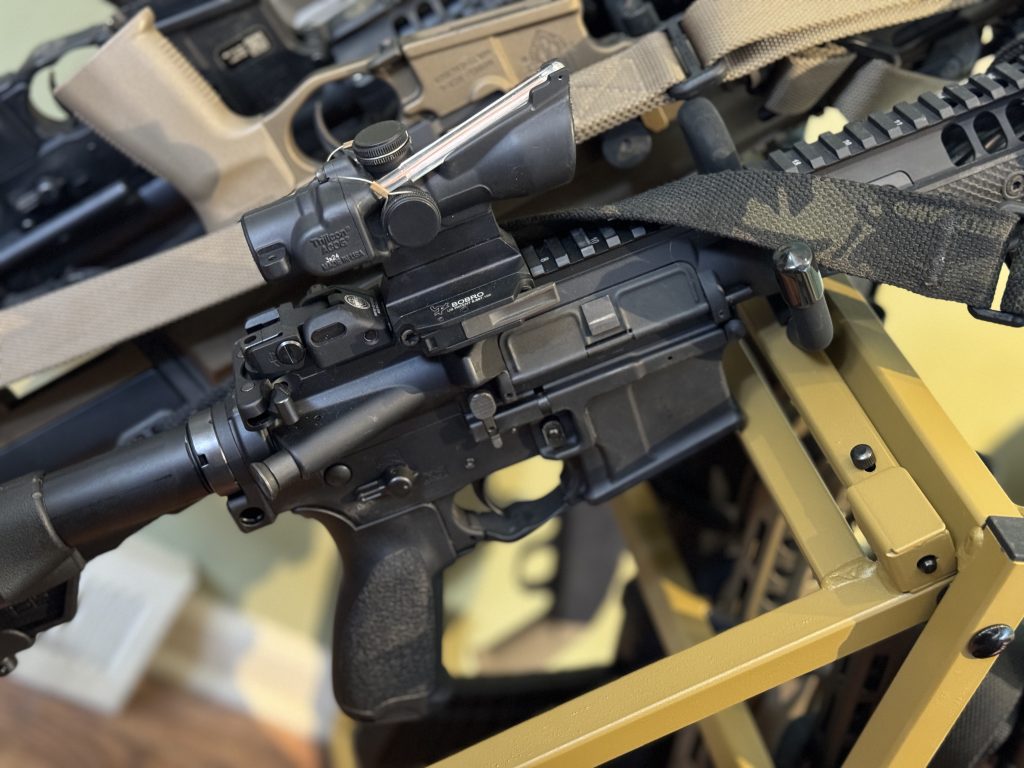
“Keith, why would you revert to an ACOG?”
I’m glad you asked, hypothetical inquisitor. I often extoll the virtues of the LPVO. I believe it to be a superior optic system and with far greater capability than a dot or a fixed magnification sight. They come in many varieties with feature and data rich layouts for a shooter to use… and that makes them complicated.
Too complicated? No, but there is a learning curve. That learning curve is processing time that whoever I hand this rifle to will have to spend familiarizing themselves with it in order to utilize it. This rifle, the ‘Loaner’, is supposed to be ready to use. Hand off and go. Handing someone an LPVO equipped rifle would be like loaning them a manual transmission diesel vehicle, fine if they know what they’re doing but a lot more hinderance if they do not.
In an ideal world I would be handing this to a friend familiar with shooting and familiar with LPVOs. But a friend and I were having a discussion about his rifle at home and I very quickly realized an error in my earlier thought process. I should not hold any expectation that the person I hand the ‘Friend Rifle’ to has the experience to use an LPVO, even if they are an otherwise proficient shooter. The LPVO is useful, but it is complex enough to cause problems and be hinderance more than help to an LPVO inexperienced user.
Simplicity itself
The solution was simple, simplify the optic suite. Reduce the learning curve in so that I can hand this to a user and only worry about having them learn the controls on the rifle, not the controls and the complexity of optic’s mathematics. Even with common proficiently experienced AR-15 shooters, I am more likely to be near someone with experience on red dots and ACOGs than any of the myriad LPVOs now on market. LPVOs are new comparatively, at least for wide market acceptance.
The ACOG hasn’t changed in function much since 1987. The red dot hasn’t either, but the rifle is trying to balance simplicity with as full functionality as can be offered. The full capability and effective range of the rifle should be as available as feasible. That lead me back to the Trijicon ACOG, specifically the TA50 which is a newer offering.
The most popular and well known ACOG is the TA31, used widely in GWOT and evolved from the TA01 by adding the fiber optic illumination to the system. The specific reticles to match rounds and barrels made them widely standard issue. The US Marines had two, the RCOA4 and RCOM4, for their two service rifles and the US Army had the M150.
The 2nd generation of ACOGs improves on two of the principle weak points of the first, their size and their eye relief. The size reduction allows the LPVOs to do their thing distinctly separate and these smaller sights are not trying to compete in their functionality sandbox. Gen 2 ACOGs and other micro-prisms are their own niche, a combination of solid state reticle benefits with fixed magnification while being no (or minimally) larger and heavier than a red dot, also plenty bright.
Why the TA50?
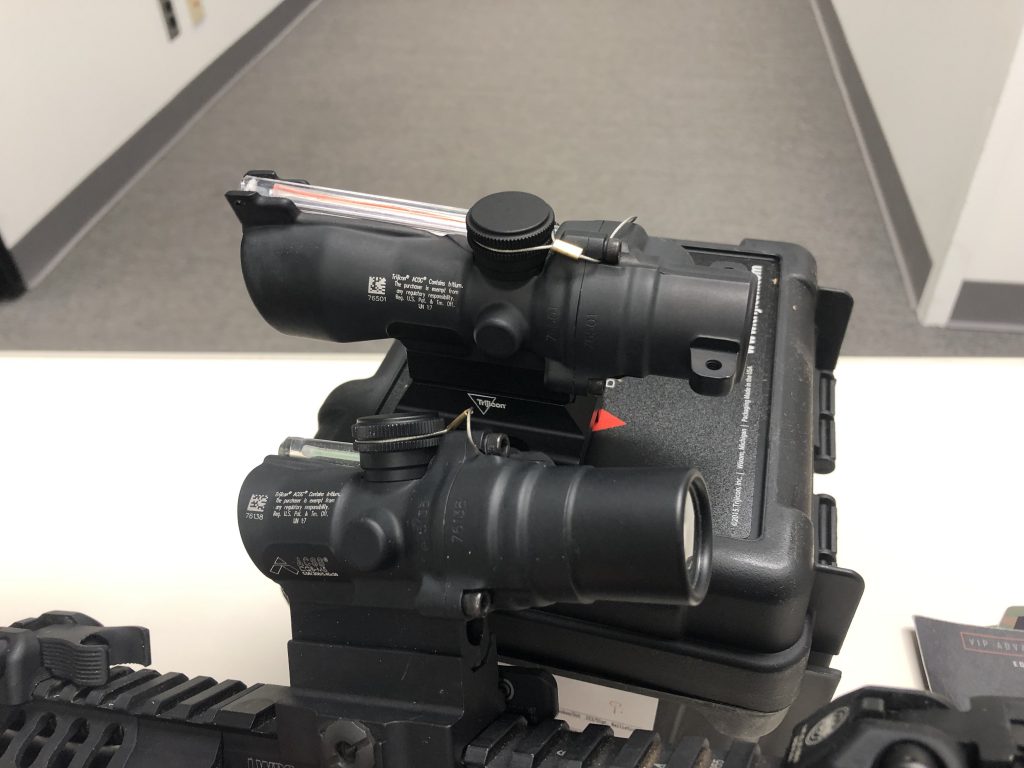
‘Loaner’ was specifically chosen and built up for low maintenance and high functionality. The TA50 supports that.

The LWRCi M6IC-SPR is moderately weighted, has ambidextrous mirrored controls, I added a 2-stage trigger and Surefire muzzle and light. That 2-stage trigger is easily learned, the rifle can be suppressed with one of my cans, and the combination of accessories results in a quickly learned and capable package for nearly any use. The gas piston system will keep it cleaner and have it run a little longer and harder than a DI system can in a pinch. I can expect a lot out of Loaner, even if the rifle is neglected due to circumstances by the operator.
I needed the optic to match that grab-and-go durable capability. It needed to be intuitive to the user and able to take advantage of the range offered by the rifle.
The TA50 delivers that. In detail, it has stages of operability as a user goes through the learning curve. The horseshoe and dot are simple and intuitive and then more of the optic makes sense as you learn the layers of data.
An LPVO could cause confusion by having too much going on with magnification adjustments, brightness, and reticle complexity. Complexity will lock up a user, they’ll be overwhelmed with running the optic and either not shoot or not shoot effectively.
The TA50 is less likely to cause confusion, if the user reverts to the lowest level of understanding of ‘put circle dot on target’ it isn’t counterproductive. In addition the ACOG has nothing to touch, nothing needs adjusting on the TA50 once it is zeroed. No on/off. No brightness dial. No magnification erector control. I eliminate all of the active decisions that require an experienced user to make them effectively. You just look through it.

Speaking of that, look through and you’ll see this. This is specifically the TA50-C-400348.
At its most basic level of understanding, a user can intuitively infer they should put that dot on the target. If its under red, its dead. This point and shoot simplicity will take the user from 3 to about 200 yards with just a little corrective training for optical offset at close distances. Instructing the 300 yard hold and 400 yard hold from there is very simple, and we haven’t yet left the illuminated portion of the reticle. If the user is already familiar with optical/bore offset the learning curve is effectively zero from muzzle to 200 yards effective.
The user hasn’t had to touch, adjust, manipulate, or use any of their controls focused mental energy on the optic. It can all be used on the rifle. Simplified mental processes = shorter learning curve and better retention of information.
Despite the simplicity the user still has an optic that will let them have an advantage against targets at the further end of the rifle’s effective range, taking shots from improbable into the realm of reasonable. You have reference points in the scope out to 800 yards. You can make a strong guess on wind. With the 3x helping the eye the chances are far higher than a 2 MOA dot just hovering in space unaided. The 3x over red illumination is also not particularly jarring when using Bindon aiming/occluded eye shooting, so those close shots remain simple too.
Simplicity matters
In this use case, for this rifle, the simplicity of the system in use is a crucial factor. By the definition of it being loaned for use at need, training time is likely to be limited and need for competent function soonest is the priority. I could be loaning the rifle for a class, and that is great, but it could be for something far more serious and it needs to be ready for that standard of hand off.
This rifle, zeroed, can be handed to anyone. Setup requires properly configuring it, left or right handed, is simply moving the rear sling point to the appropriate side and checking the sizing of sling and stock position. The instructions on the optic start at “put the dot on the target”, then “here are your close distance hold overs”, and ends at the advanced level of “these are approximate 18-20″ shoulder widths at correspondingly long distances to estimate a range and give you a point of aim for the range,”
By removing the need (or any function at all) to dial in magnification or brightness, to not have to teach/learn a reticle that scales accurately at one magnification setting, to not teach/learn a more nuanced FFP reticle that gives the user a lot of data, and by giving the user one repeatable sight picture to look at that can be used comfortably across most of the rifles effective range, the TA50 does the one thing that friend probably needs when they are in need of this rifle.
It keeps their problem simpler.


